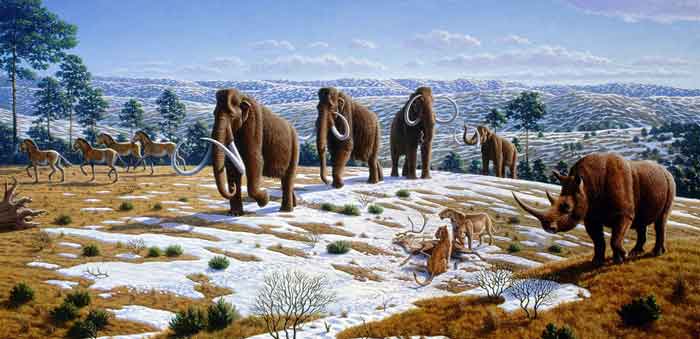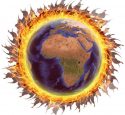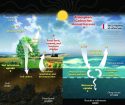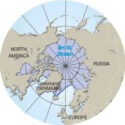What is an Ice Age?
Our Earth has experienced very long periods of time in which the average temperature of the Earth has dropped. These periods are called ice ages and they resulted in the expansion of glaciers all around the Earth. Most of the land area in Northern Europe and North America were covered by ice sheets during ice ages.
Currently, our Earth is in an ice age called Quaternary ice age. You may be wondering then where are Glaciers all around North America. Actually, we are in the warmer period of the ice age called interglacial period, and many glaciers have already melted in this period.
Evidence of Ice Ages
There are various ways in which scientists figure-out when and how many ice ages have been occurred in the history of the Earth. There are three main types of evidence which are geological, chemical, and Fossils.
Geological evidence about ice ages is very important because there are various features on the Earth that describe ice ages. These features are rock scratching, scouring, and valley cutting. Scientists study these features to figure-out ice ages. After geological analysis of the Earth, scientists also analyze the Rocks chemically and the fossils to know about ice ages.
Major Ice Ages of the Earth
Our Earth has experienced five major ice ages since its birth. These ices ages are the Huronian, Cryogenian, Andean-Saharan, Karoo, and Quaternary Ice age. Among these ice ages, Quaternary ice age is still going on in its interglacial period. Outside of these five major ice ages, our Earth was entirely ice-free – means it had no glacier.
Let’s learn more about these five major ice ages in detail:
- Huronian: Huronian is the first and the longest ice age in the history of the Earth. This ice age started around4 billion years ago and reached its end about 2.1 billion years ago – taking more than 300 million years. Scientists have found evidence that Huronian ice occurred because greenhouse gases and methane in the atmosphere were somehow eliminated, possibly due to a reduction in volcanic activity.
- Cryogenian: Cryogenian ice age was the most severe ice age among the five major ice ages. Scientists say that in this ice age our Earth became an ice ball and glaciers have reached the equatorial regions. This ice ages occurred around 720 million years ago and came to the end 630 million years ago.
- Andean-Saharan: This ice age had lasted for 40 million years and had occurred on 460 million ago.
- Karoo: It is the last major ice age that lasted for about 100 million years from 360 million years ago. The reason behind naming this ice age “Karoo” is due to the fact that glacial tills in Karoo, South Africa were formed in this ice age.
- Quaternary: It is the current ice age on which we are living. It has started about 2.5 million years ago and is still going on. We are living in the interglacial period of the ice age which is warmer. Most of the continental ice sheets that were developed in this ice age are now only in Greenland and Antarctica.
Causes of Ice Ages
Our Earth has been experiencing many external and internal changes since its birth. These changes highly impact the global climate and cause changes in average temperature. The external changes that our Earth experiences are due to the Sun and the orbit of Earth. Whereas, internal changes include Ocean currents, changes in atmospheric composition, and volcanic activities. When the average temperature of the Earth decreases due to any of these changes, an ice age begins.
Facts
- Around 20,000 years ago, most of the Canadian land was covered with glaciers.
- Just a drop of few degrees in the average temperature of the Earth, an ice age can occur.
- Ice reflects the sunlight back to space. As a result, the span of ice ages increases due to this property of ice.






